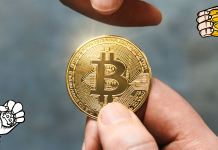Bitcoin remains the most popular and valuable blockchain and cryptocurrency. It has much wider adoption across the finance industry than any other in its league and is a household name worldwide.
Its popularity comes with one downside. It is slow and congested. The Lightning Network attempts to solve this by moving transactions off-chain.
The Lightning Network has already attracted many developers and platforms, like the best crypto casino for crypto gambling and video games that reward players in Bitcoin.
Let us look at What is the Lightning Network, how it works, and its pros and cons.
What Is The Lightning Network?
The Bitcoin Lightning Network (LN) is a layer two solution that works with the main Bitcoin blockchain but has separate transaction protocols. The Lightning Network has separate nodes and software, and it only communicates with the main Bitcoin blockchain when users enter and exit the Lightning Network.
Before users enter the Lightning Network, they must establish a smart contract with another user. This contract has various conditions that allow users to pool Bitcoin and perform an almost limitless transaction. The other conditions prevent either party from ending the contract prematurely.
Furthermore, when two users establish a smart contract with each other, they create a channel on the Lightning Network. Each user needs to input an amount of Bitcoin in the channel.
For example, Chris inputs 2BTC while Guy inputs 2BTC. The channel now has a total of 4 BTC. If Chris sends 1BTC to Guy, the channel will update its share of the total. Chris will have 1BTC while Guy has 3BTC. They can transact like this until either party end the channel, but both need to approve it.
Once they both agree to close the channel, the Lightning Network sends the transactions to the main blockchain, and they receive their shares of the total BTC in the channel.
Additionally, users can link their channels to other users, forming a web of interconnected nodes that do not need to communicate with the main blockchain. Accordingly, this web creates a solution to Bitcoin’s issues with scalability.

What Is The Lightning Network’s History?
Bitcoin’s creator, Satoshi Nakamoto, first referenced payment channels in the Bitcoin 0.1 code in 2009. It set out a method where users could perform transactions without communicating with the main blockchain. That said, it was not secure as it allowed users to input old transactions to cheat the system and erase any Bitcoin they owed.
Later, many others involved with the Bitcoin project proposed methods to make payment channels more secure. These included adding multi-signature and timelock conditions to transactions to prevent foul play.
In 2015, Thaddeus Dryja and Joseph Poon published a paper titled “The Bitcoin Lightning Network: Scalable Off-Chain Instant Payments.” Here they expanded on how an off-chain protocol with payment channels could solve Bitcoin’s scalability issues and result in cheaper, smaller transactions without overburdening the main blockchain.
Accordingly, in 2016, the pair founded Lightning Labs. With the help of other researchers and developers, Lightning Labs focuses on developing software that powers the Lightning Network. They offer solutions for streamlining transactions using the Lightning Network protocol. All its software is open-source and secure.
Accordingly, this allowed Lightning Labs to launch the beta version of the Lightning Network on the Bitcoin mainnet in 2018. By this time, developers had already deployed applications that leveraged the network. These included gambling applications, wallets, and others.
More recently, the Lightning Network garnered media attention when El Salvador announced that it would use Bitcoin as a legal tender in September 2021. This move came from the scalability and affordability the Lightning Network provides when sending and receiving BTC.
The Bitcoin Lightning Network Explained: How It Works
The Lightning Network uses a range of software solutions to ensure scalability, speed, and security when transacting with Bitcoin. The network uses payment channels where two users can pool their funds and make many small transactions. They can then link their channel to other users creating an off-chain network. Of course, these channels must be free from cheaters and impervious to hackers.
Multisignature Addresses

Firstly, the LN uses multisignature (multisig) addresses to facilitate payment channels. A multisig address allows more than one private key (user) to spend from one address. To create a multisig address, a user needs to determine how many private keys can be spent and how many need to sign the transaction to validate it.
Users on the LN need to create 2-2 multisig payment channels. After users input their BTC into the payment channel, both need to agree on when to move the BTC out.
For example, Chris and Guy input 5BTC and create a total share of 10BTC. Chris sends Guy 5BTC, and they rebalance their shares to Chris 0BTC and Guy 10BTC. Seeing that both parties need to agree to withdraw BTC from the channel. Chris can easily refuse to do this. This creates a trust issue.
Hash Timelock Contracts
The LN employs Hash Timelock Contracts (HTLC) to solve this issue. These contracts are a combination of hashlocks and timelocks.
A hashlock is a transaction condition stating that a user needs to know a secret before spending BTC in a channel. The user can also receive this secret from the other user in the channel. They receive this secret by transacting with the other user.
Moreover, a timelock is a condition that puts a time limit on when users can spend BTC in a channel. It can be a specific time or a block height.
The HTLC attempts to solve the trust issue by limiting when a party can close a channel. For example, Chris’s (0BTC) and Guy’s (10BTC) payment channel with HTLC can prevent Chris from stalling the channel, even if Guy signs the multisig address and Chris does not. The guy just needs to wait for the timelock to activate, or he could use Chris’ secret if they transacted more than once.
Payment Routing
The combination of multisig addresses and HTLCs makes payment channels a secure and trustless platform for BTC transactions. But payment routing makes the LN a scalable solution.

To illustrate, Chris and Guy send and receive BTC in their payment channel, but they are not limited to only sending BTC to each other. They can form links with other users in other channels. Let us say that Chris wants to send 4BTC to Alison’s channel with Guy. He does not need to create a direct payment channel with Alison. Instead, he can route the payment through Guy.
Chris sends 4BTC to Guy, and Guy sends the 4BTC to Alison. The guy could ask for a routing fee to perform this action.
WatchTowers
HTLCs ensure that there is no stalling in a payment channel. But there are many reasons why a user might not be able to sign a multisig address. They could suffer a blackout in their city, be locked out from the network due to a DDOS attack, and other reasons.
Accordingly, the LN has a service called WatchTowers that monitor payment channels for suspicious downtime and channel breaches. Users can use the service if an attacker purposely stalls a payment channel and drains the funds.
What Are The Lightning Network’s Pros?
As previously mentioned, the LN does not rely on the main Bitcoin blockchain to process transactions between channel participants. Its operations are off-chain, meaning that it does not have the limitations of the main chain.
Inversely, it cannot degrade the main chain. Bitcoin blockchain remains the longest and most secure blockchain regardless of any deficiencies with the LN. This provides several advantages:
Microtransactions
The Bitcoin blockchain has a transaction limit of 0.00000546 (around 34 cents USD). To illustrate, that is 25 Rupees in India, 37,72 shillings in Kenya, and 4,97 Rand in South Africa. Now in these developing countries transacting in satoshis (0.00000001 BTC) would allow users to make micropayments. These could be for coffee, mobile data, lunch, etc.
Accordingly, the LN allows users to transact using 1 satoshi, so this has numerous benefits. It makes Bitcoin a viable mode of payment for everyday transactions, and websites can use micropayments to charge users to use their services.
Speed

Block confirmation time on the Bitcoin blockchain is around 10 minutes. This means that users must wait quite sometime before they receive transaction approval. Again, this makes everyday purchases untenable.
Fortunately, the LN’s settlement time is under a minute. This means it can handle thousands of transactions without a hiccup.
Lower Fees
Bitcoin’s confirmation time of 10 minutes becomes an issue when thousands of users need their transactions verified simultaneously. Users can pay miners a fee to prioritise their transactions. But bidding for block space can become expensive as the minimum bid increases and more space competition arises. Of course, miners will choose the transactions with the highest fees, so a user can pay more than $5 to speed up their transactions.
Accordingly, this limits Bitcoin’s everyday use because people rarely pay more than $5 for a sandwich or mobile data. On LN, users only need to pay a fee for opening and closing a channel. While in a channel, they make almost unlimited free transactions using the LN.
What Are The Lightning Network’s Cons?
On the other hand, the LN has some limitations at present. Developers can fix these limitations with future updates and applications. But currently, these limitations hamper the LN in some respects.
No Offline Support
Payment channels operate on a 2-2 multisig address. Both parties in a channel need to approve the closing and opening of a channel, and there are conditions in place to prevent stalling.
But, if one of the users is offline for an extended period. The other user can claim the BTC in the channel. Of course, the other user can use the WatchTower service. But it is not a mandatory service. This means that some users might be unaware of this security measure, making them vulnerable to these contract conditions.
Furthermore, users also need to deposit BTC into an online payment channel. And leaving your BTC accessible online always leaves you vulnerable to a cyber-attack. If attackers target the network and steal BTC, no contingencies exist. There are also no cold storage options.
No Routing and Mining Incentive

Bitcoin miners generally perform the task to receive mining rewards, but these rewards diminish at certain block heights. This makes miners more reliant on transaction fees from users looking to have their transactions included in the next block.
The LN only sends transaction groups to the main chain when users open or close a payment channel. In the channel, they do not need to pay any fees to miners. Additionally, users can link channels without closing previous ones. This means there might only be a finite number of channels in the future, possibly cutting miners out of the equation.
Furthermore, there is no fixed fee for routing payments; routers can set their fees to perform this action. This leaves the network vulnerable to malicious actors creating bottlenecks where they charge an extremely high fee to route payments to other users. This could also lead to centralised hubs, where one user has a major network of connected payment channels. If they go offline, it can seriously impact many users.
Final Thoughts
What is the Lightning Network? Well, it’s a practical solution to using Bitcoin as a currency, not a value store.
It introduced simple use cases that can make BTC a viable option for micropayments, subscription services, and as a tipping tool.
Currently, it still has much to iron out. The fee structures are not rigid enough. There is the possibility of centralisation, and it is vulnerable to cyber-attacks due to its always-online state.
Ultimately, the LN requires time to solve some of its issues, but the future looks bright for this layer two protocol.















